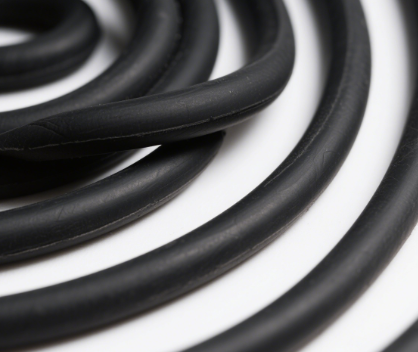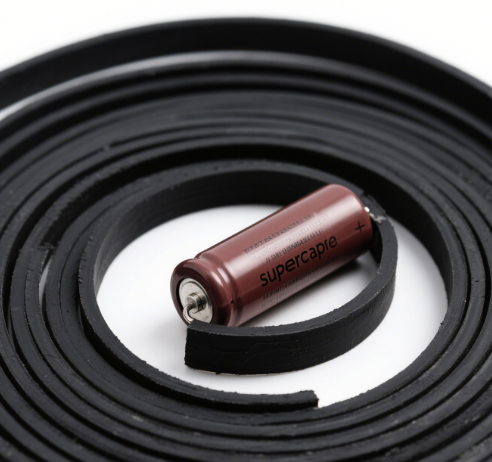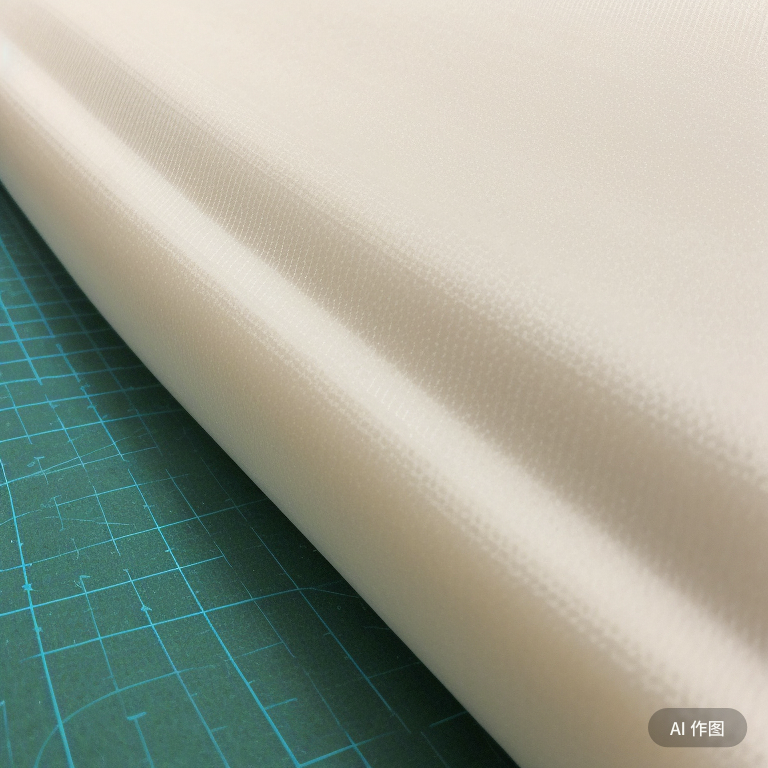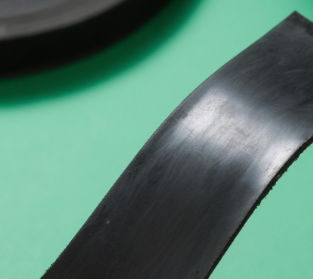conductive rubber for brain-computer interfaces
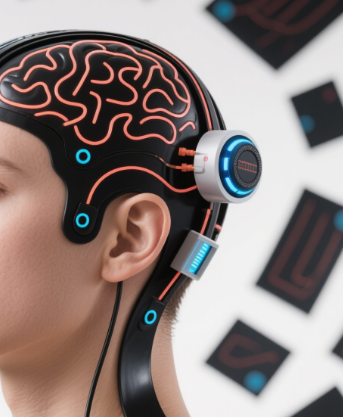 for brain-computer interface (BCI) is a new type of functional material that combines flexible materials with conductive properties, showing unique advantages in the field of brain-computer interface (BCI). The following analysis will be carried out from aspects such as material properties, application scenarios, technical challenges, and future trends:
for brain-computer interface (BCI) is a new type of functional material that combines flexible materials with conductive properties, showing unique advantages in the field of brain-computer interface (BCI). The following analysis will be carried out from aspects such as material properties, application scenarios, technical challenges, and future trends:
- Material Properties and Working Principle
The conductive rubber uses silicone rubber as the matrix, and a conductive network is formed by adding conductive fillers (such as silver powder, carbon nanotubes, graphene, etc.). Its core properties include:
High Flexibility and Conformability: The elasticity of silicone rubber enables it to closely adhere to the scalp or brain tissue, reducing the rigid pressure of traditional metal electrodes.
Conductivity Regulation: The type and content of conductive fillers determine the conductivity of the material. For example, the volume resistivity of silicone rubber filled with silver powder can be as low as 0.004Ω·cm, while carbon-based fillers (such as graphene) have both conductivity and light weight.
Structural Innovation: Some conductive rubbers adopt a three-dimensional porous structure (such as carbonized melamine sponge), and a metal layer is coated through electroplating technology, significantly improving the conductive stability and mechanical properties.
In terms of the working principle, the conductive rubber makes the conductive particles contact to form a conductive path through pressure, while maintaining the elasticity of the rubber. For example, in an electroencephalogram (EEG) cap, the conductive rubber electrode conforms to the scalp through slight deformation, reducing the contact impedance and enabling stable EEG signal acquisition.
- Application Scenarios in Brain-Computer Interface
- Non-invasive Brain-Computer Interface
EEG Cap: Traditional EEG caps require the use of conductive paste, while the dry electrodes made of conductive rubber can directly adhere to the scalp, simplifying the operation process. For example, the EEG cap developed by Tsinghua University uses silicone rubber-based dry electrodes. By optimizing the dispersion of fillers (such as adding zinc dimethacrylate), the signal stability is improved.
Wearable Devices: Flexible conductive rubber is suitable for wearable devices such as headbands and glasses. For example, the FocusOne headband by BrainCo can achieve high-precision EEG acquisition through solid-state gel electrodes. - Semi-invasive and Invasive Brain-Computer Interface
Epidural Electrodes: Conductive rubber can be used for semi-invasive electrodes under the skull and above the cerebral cortex, reducing the surgical risk while improving the signal quality.
Long-term Implantation: Some studies explore the application of conductive rubber in invasive electrodes. For example, the biocompatibility can be enhanced through surface modification (such as polydopamine coating) to reduce the inflammatory response. - Special Scenarios
Dynamic Environment: The conductive rubber can still maintain its conductive performance when stretched or bent, making it suitable for EEG monitoring during movement.
Anti-interference: Its low impedance characteristics can effectively suppress environmental noise, especially performing excellently in high-frequency signal acquisition.
III. Technical Advantages and Challenges
Advantages
Comfort and Safety: The flexible material reduces skin irritation, and the biocompatibility of silicone rubber makes it suitable for long-term wearing.
Signal Quality: The signal quality of the optimized dry electrodes made of conductive rubber is close to that of wet electrodes, and there is no need to frequently replenish the conductive medium.
Cost-effectiveness: Large-scale production reduces costs. For example, the cost-performance ratio of conductive rubber filled with nickel-coated copper powder is better than that of pure silver filler.
Challenges
Conductive Stability: Metal fillers are prone to oxidation (such as silver powder), resulting in a decrease in conductive performance after long-term use. Solutions include surface modification (such as nickel plating) or the use of carbon-based fillers.
Impedance Control: The impedance of dry electrodes is usually higher than that of wet electrodes, and it needs to be optimized through structural design (such as micro-needle arrays) or dynamic regulation technology (such as microfluidic electrolyte release).
Biocompatibility: In invasive applications, the conductive rubber needs to pass strict biological tests (such as cytotoxicity, inflammatory response), and some metal fillers may trigger immune responses.
- Research Progress and Future Trends
Material Innovation:
Composite Fillers: Combining metal and carbon-based materials (such as graphene/silver composite fillers) to balance conductivity and flexibility.
Smart Responsive Materials: Developing temperature or pressure-sensitive conductive rubber to achieve adaptive signal enhancement.
Manufacturing Processes:
3D Printing: Customized electrode structures to improve the conformability and signal acquisition efficiency.
In-situ Forming (FIP): Directly coating with fluid-like conductive rubber to achieve seamless connection of complex curved surfaces.
Commercialization Progress:
Medical Devices: In implantable neural stimulators (such as brain pacemakers), conductive rubber is used for the interface between electrodes and brain tissue.
Consumer Electronics: Products such as EEG headbands and smart prosthetics are gradually being mass-produced, such as the FocusOne headband by BrainCo.
Future Directions:
Multimodal Integration: Combining conductive rubber with flexible sensors to achieve synchronous acquisition of EEG, electromyogram (EMG), and physiological signals.
Nerve Repair: Developing biodegradable conductive rubber for use in nerve regeneration scaffolds to promote the repair of damaged brain tissue.
- Typical Cases and Data Support
EEG Cap of Tsinghua University: Using silicone rubber-based dry electrodes, the dispersion of fillers is improved by adding zinc dimethacrylate. The signal stability is increased by 30%, and the impedance is reduced to below 10kΩ.
Highly Conductive Rubber Material: The carbonized melamine sponge/copper composite conductive rubber has a volume resistivity as low as 0.1Ω·cm, and the conductive performance retention rate reaches 95% after being stretched 500 times.
Semi-invasive Electrodes: The Shanghai Brain-Computer Interface Action Plan promotes the research and development of epidural electrodes, aiming to achieve the restoration of motor function in paralyzed patients.
Conclusion
With its characteristics of flexibility, conductivity, and biocompatibility, the conductive rubber for brain-computer interface is reshaping the development of non-invasive and semi-invasive brain-computer interfaces. Although facing challenges in stability and biocompatibility, innovations in material science and manufacturing processes (such as composite fillers and 3D printing) are accelerating its commercialization process. In the future, conductive rubber is expected to be more widely applied in fields such as medical rehabilitation and consumer electronics, promoting the transformation of brain-computer interface technology from the laboratory to clinical practice and daily life.













